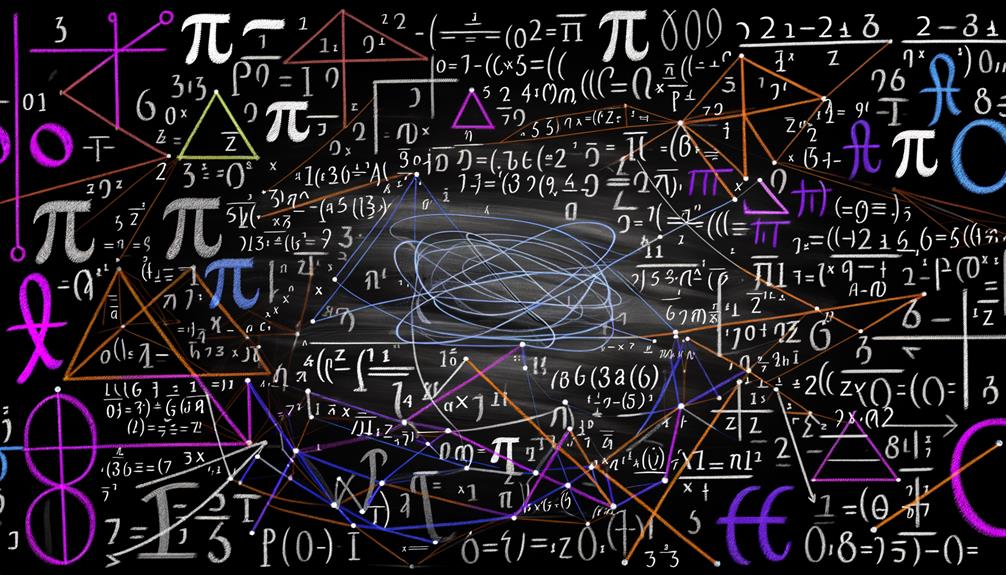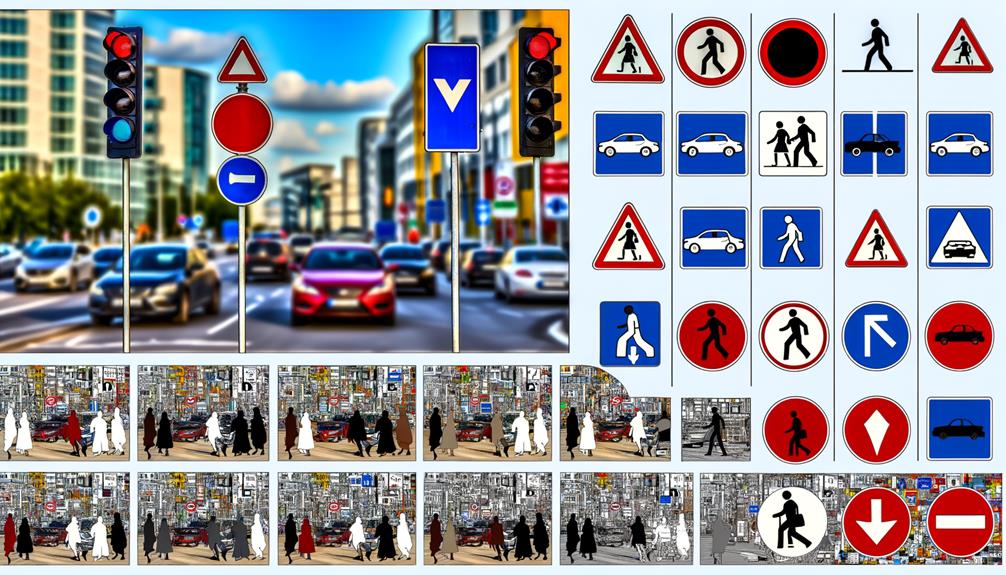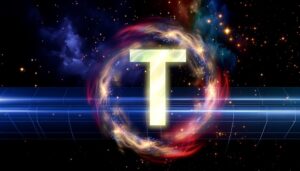Decoding Symbols and Discovering Their Meaning
Symbols encapsulate meanings steeped in diverse contexts. Ancient hieroglyphs offer insights into historic record-keeping and narratives, while religious symbols, such as the cross or Om, convey profound spiritual values.
Cultural emblems like the chrysanthemum in Japan or the American bald eagle reveal national identity and heritage. Modern icons, including social media symbols and corporate logos, shape digital interactions and brand loyalty.
Mathematical symbols facilitate complex calculations and theoretical work. Understanding a symbol's context reveals its significance and utility.
Each category intricately reflects human beliefs, practices, and societal structures, inviting a deeper exploration of their interconnected meanings and roles.

Key Takeaways
- Symbols represent ideas, concepts, or objects, aiding in communication and identification.
- Religious symbols convey spiritual beliefs and values specific to traditions, like the cross in Christianity.
- Cultural emblems signify shared history, identity, and values, such as the American bald eagle.
- Modern icons, including social media and tech logos, influence brand identity and user interactions.
- Mathematical symbols facilitate the expression of complex mathematical operations and concepts, like the equality and integral signs.
Ancient Hieroglyphs

Ancient hieroglyphs, as one of the earliest forms of written communication, provide invaluable insights into the cultural, religious, and social practices of early civilizations.
These intricate symbols, primarily associated with ancient Egypt, served multiple functions, ranging from administrative record-keeping to conveying complex narratives.
The precision and consistency found in hieroglyphic inscriptions demonstrate a sophisticated understanding of language and symbolism.
By examining these artifacts, scholars can reconstruct historical contexts, decipher socio-political structures, and understand everyday life.
Additionally, the study of hieroglyphs illuminates the evolution of written language, illustrating how abstract thoughts were systematically encoded into visual forms.
This meticulous documentation offers a unique window into the past, allowing modern researchers to piece together the intricate tapestry of ancient human experience.
Religious Symbols

The examination of religious symbols reveals their profound impact on cultural and spiritual practices.
The cross, for instance, holds significant theological and historical implications within Christianity, while symbols in Eastern religions such as the Om and the Lotus carry deep philosophical meanings.
Understanding these symbols provides insight into the values and beliefs that shape various religious traditions.
Cross and Its Significance
Among the various religious symbols, the cross stands out due to its profound significance in Christianity, symbolizing both the crucifixion of Jesus Christ and the promise of resurrection.
The cross, representing both suffering and salvation, has evolved over centuries as a central emblem of Christian faith. Historically, it serves as a poignant reminder of Jesus' sacrifice for humanity's sins and the subsequent hope of eternal life. Its adoption spans diverse denominations, each imbuing it with theological interpretations and liturgical uses.
Variations such as the Latin cross, Greek cross, and crucifix further illustrate its multifaceted role. The cross's omnipresence in Christian iconography highlights its enduring power to unify and inspire believers globally.
Symbolism in Eastern Religions
In contrast to the cross's significance in Christianity, Eastern religions employ a diverse array of symbols each encapsulating unique philosophical and spiritual tenets. For instance, Hinduism's Om signifies the universe's primordial sound, while Buddhism's Dharma Wheel represents the path to enlightenment. Taoism's Yin-Yang illustrates the duality of existence, and Shinto's Torii Gate demarcates the sacred from the profane.
| Symbol | Religion | Meaning |
|---|---|---|
| Om | Hinduism | Universe's primordial sound |
| Dharma Wheel | Buddhism | Path to enlightenment |
| Yin-Yang | Taoism | Duality of existence |
| Torii Gate | Shinto | Boundary between sacred and profane |
These symbols, deeply embedded in their respective traditions, serve as conduits for conveying complex metaphysical and ethical principles.
Cultural Emblems

Cultural emblems serve as powerful symbols that encapsulate the values, traditions, and collective identity of a community. These emblems, which can take the form of flags, national animals, or traditional attire, act as visual representations of a shared cultural heritage.
For instance, the Japanese chrysanthemum blossom symbolizes longevity and rejuvenation, deeply rooted in the nation's historical and cultural context. Similarly, the American bald eagle signifies freedom and strength, embodying the country's foundational ideals.
Such symbols not only foster a sense of belonging among community members but also convey complex cultural narratives to the outside world. By examining these emblems, one gains insight into the historical experiences and societal values that shape a community's unique identity.
Modern Icons

Modern icons, such as social media symbols and tech company logos, have become ubiquitous in contemporary society, serving both as identifiers and as cultural touchstones.
These symbols are not merely functional; they encapsulate brand identity and influence user behavior on a global scale.
The semiotic significance of these icons warrants a rigorous examination to understand their impact on communication and consumer culture.
Social Media Symbols
Social media symbols, often referred to as modern icons, serve as visual shorthand that conveys complex ideas, emotions, and actions with remarkable efficiency. These symbols, such as the heart for 'like', the arrow for 'share', and the speech bubble for 'comment', transcend linguistic barriers and facilitate swift communication.
Their standardized forms and ubiquitous presence enable users to interact seamlessly across various digital platforms. Moreover, the cognitive ease with which these icons are recognized and understood underscores their integral role in modern communication.
Tech Company Logos
Tech company logos, as quintessential modern icons, serve not only as brand identifiers but also as potent symbols of innovation and technological advancement. These logos encapsulate complex corporate missions and visions in simplified visual forms.
For instance, Apple's logo, a minimalist depiction of a bitten apple, represents sleek design and user-centric technology. Google's multicolored emblem signifies diversity and inclusivity in its services. The logos of tech giants like Microsoft and Amazon employ geometric forms and arrows to indicate forward-thinking and expansive growth.
Such logos are meticulously crafted to resonate with audiences globally, embodying the ethos and aspirations of their respective companies. Hence, tech company logos are not merely aesthetic elements; they are strategic assets fostering brand loyalty and corporate identity.
Mathematical Symbols

Mathematical symbols serve as the foundational language of mathematics, enabling concise and unambiguous communication of complex concepts and operations.
These symbols, ranging from basic numerals and arithmetic operators to advanced notations in calculus and abstract algebra, facilitate the representation of intricate relationships and structures.
For instance, the equality symbol '=' signifies equivalence between two expressions, while the integral sign '∫' denotes the summation of infinitesimal elements.
The use of symbols such as 'π' and 'i' encapsulates profound mathematical constants and imaginary units, respectively.
By standardizing these notations, mathematicians across the globe can engage in a coherent dialogue, transcending linguistic barriers.
Therefore, mathematical symbols are indispensable tools for both elementary calculations and sophisticated theoretical explorations.
Scientific Notations

Scientific notations provide a systematic method for expressing very large or very small numbers, thereby simplifying calculations and enhancing precision in various scientific disciplines.
By representing numbers as a product of a coefficient and a power of ten, scientific notation allows for more manageable arithmetic operations.
For example, the speed of light, approximately 300,000,000 meters per second, is succinctly written as 3 × 10^8 m/s. This notation is indispensable in fields like physics, chemistry, and astronomy, where quantities often span many orders of magnitude.
Additionally, it reduces the potential for error in both manual and computational calculations. Understanding and utilizing scientific notation is fundamental for scientists and engineers, as it streamlines complex problem-solving and data analysis processes.
Emojis in Digital Age
Emojis, as a form of digital communication, have become integral in contemporary online interactions, providing nuanced emotional expression and enhancing textual communication. Their utility in conveying tone, mood, and intent often surpasses that of plain text, mitigating potential misinterpretations.
Emojis function as a visual shorthand, encapsulating complex emotions and social cues into simple, universally recognizable symbols. This symbolic efficiency supports more dynamic, contextually rich conversations in digital formats such as messaging apps and social media.
Moreover, the cross-cultural applicability of emojis aids in bridging linguistic barriers, fostering a more inclusive digital dialogue. As their usage proliferates, understanding the semiotics and sociolinguistic implications of emojis becomes essential for comprehending modern digital communication paradigms.
Common Road Signs

Common road signs are fundamental elements of traffic management systems, providing essential information and instructions to guarantee safe and efficient transportation. The semiotics of road signs encompasses regulatory, warning, and informational categories, each with distinct shapes, colors, and symbols for immediate recognition and comprehension.
Regulatory signs, such as stop and yield, dictate mandatory actions, ensuring order and compliance. Warning signs, including those for curves and pedestrian crossings, alert drivers to potential hazards, enhancing situational awareness. Informational signs deliver navigational aid, indicating directions, distances, and points of interest.
The standardization of these symbols under international conventions, such as the Vienna Convention on Road Signs and Signals, facilitates uniform understanding, promoting global road safety and operational coherence.
Brand Logos

Brand logos serve as powerful visual identifiers that encapsulate a company's identity, values, and market position through carefully crafted design elements. These symbols are meticulously designed to evoke specific emotions, establish brand recognition, and foster consumer loyalty.
The color palette, typography, and imagery are chosen to align with the brand's core message and strategic goals. For instance, minimalist logos often signify modernity and sophistication, while intricate designs may communicate heritage and tradition. The psychological impact of logos is profound; a well-designed logo can influence consumer perception and behavior.
Additionally, logos must be versatile, maintaining clarity and impact across various media and scales. Therefore, the strategic design of brand logos is a critical component of effective corporate communication.
Conclusion
The varied nature of symbols throughout history underscores their profound impact on human communication and understanding. From ancient hieroglyphs to modern emojis, each symbol serves as a vessel of meaning, transcending linguistic barriers and encapsulating complex ideas succinctly.
Like threads in a vast tapestry, these symbols weave together the fabric of cultural, religious, and scientific knowledge, illuminating the shared human experience. An in-depth analysis reveals their indispensable role in shaping collective consciousness and advancing civilization.





